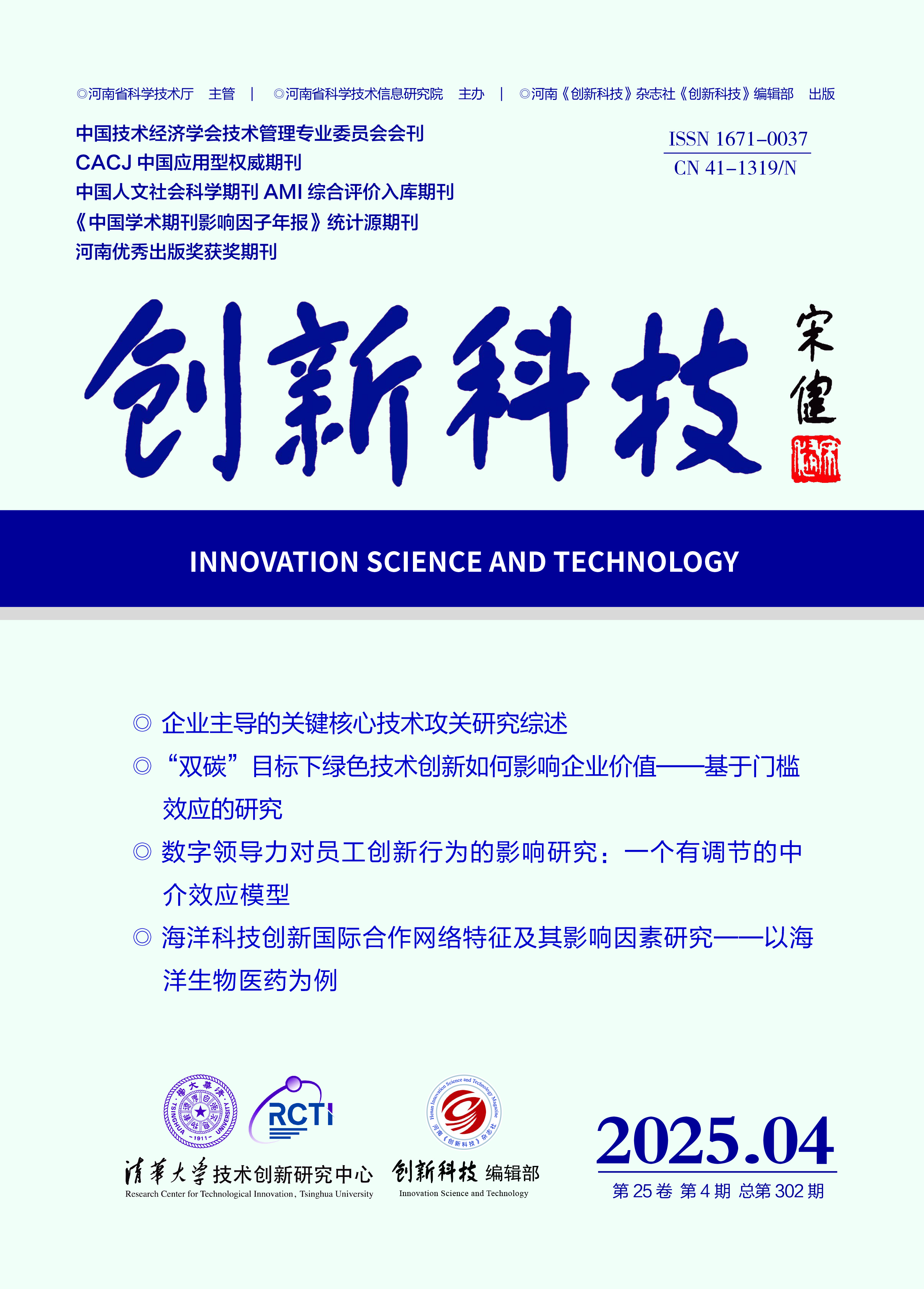INNOVATION SCIENCE AND TECHNOLOGY
Quick Search

All publication are peer-review
Peer review will take the from of double-blind review Judge objectively and impartially
There is no conflict of interest for the reviewer
Review articles shall be kept strictly confidential prior to publication
Theories and Methods of Science of Science
Study on the Interaction Between Green Technology Innovation, Economic Growth, and Carbon Emission Based on PVAR Model
Bai Mingguo, Cheng Honghe, Zheng Ke
(School of Business, Anhui University of Technology, Ma'anshan 243032, China)
Abstract: Over the past 40 years of reform and opening up, China's economy has experienced rapid growth. However, this rapid economic development has come at a cost: the natural environ⁃ ment has been seriously damaged, leading to immense pressure for ecological restoration. Ac⁃ cording to authoritative statistics, China ranks first in the world for total carbon emissions. In re⁃ sponse, the Chinese government has put forward the strategic goals of "Carbon Peaking and Car⁃ bon Neutrality", advocating a green, environmentally friendly, and low-carbon lifestyle while pursuing green and low-carbon development. Achieving the "Carbon Peaking and Carbon Neu⁃ trality Goals" and high-quality economic development are the two strategic tasks now in the new development stage, and green technology innovation is an important support for carbon emission reduction and economic growth. Therefore, it is of great theoretical and practical significance to explore the interaction between green technology innovation, economic growth, and carbon emis⁃ sion in China. This paper uses the panel vector autoregressive model to analyze the panel data of 30 prov⁃ inces (municipalities and autonomous regions) from 2011 to 2021 to investigate the interactions between green technology innovation, economic growth, and carbon emission across the overall country, as well as in the eastern, central, and western regions. The results show that, from the perspective of China's overall development, the level of green technology innovation and eco⁃ nomic growth shows a decreasing trend across the eastern, central, and western regions. The growth rate of carbon emissions in China has continued to slow down, leading to remarkable achievements in carbon emission reduction. In the short term, there is a positive relationship between green technology innovation and carbon emission, with green technology innovation sup⁃ porting economic growth. In the long run, there are plain differences across the interactions be⁃ tween green technology innovation, economic growth, and carbon emissions. The interaction of the three in the eastern region is not significant. In the later stage, the central region can experi⁃ ence a positive effect of carbon emissions on green technology innovation, which leads to a coor⁃ dinated relationship between green technology innovation and economic growth. In the western region, green technology innovation and economic growth can not only promote each other in the later stage, but also help to restrain carbon emissions. It is important to note that green technol⁃ ogy innovation tends to lag, which means that its impact on reducing carbon emissions will be more evident in the later stage. According to the research conclusions, the following suggestions are put forward: China should prioritize improving the level of green technology innovation, actively promote innovation-driven green and low-carbon development, and form a two-way synergistic interac⁃ tion mechanism between green technology innovation, economic growth, and carbon emission re⁃ duction as soon as possible. It is necessary to pay attention to regional differences in carbon emission levels and implement differentiated carbon reduction policies. The eastern region should strengthen research and development in clean energy and carbon emission reduction tech⁃ nologies, the central region needs to improve its capacity for independent innovation, while the western region should strengthen infrastructure development. China should accelerate the reform of the traditional energy structure, spearhead the transformation and upgrading of its industrial structure, promote the green transformation of the economic structure, and explore new economic growth opportunities in emerging sectors.
Key words: carbon emission; green technology innovation; economic growth; PVAR model; interactive relation